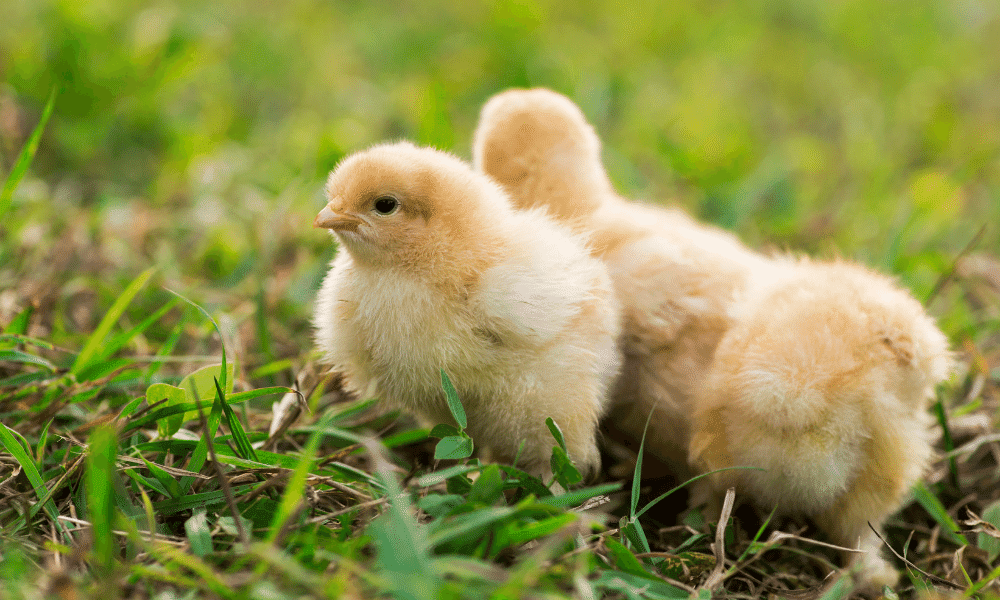5 Steps to Treat Poultry Mites in Chickens
As the warmth of the season embraces us, a troublesome duo emerges: poultry mites and lice, swarming into action! In the hustle and bustle of spring and summer, it's easy to be caught off guard by these poultry pests. They appear as tiny specks or bugs in black, gray, or red, scurrying about. What's astonishing is their ability to reproduce a whole new generation in less than a week.
Poultry lice infest the rear end of birds, feeding off their dead skin, while poultry mites are blood-sucking bugs that target a bird's face, neck, wings, and rear. Northern poultry mites are small and black, residing on the host bird, while larger red mites hide in coop cracks during the day and emerge at night to feed on their host's blood.
Severe mite infestations can lead to hens ceasing egg production and suffering from iron deficiency as their blood is drained. Chickens may lose feathers, energy, and the vibrant red color in their combs. Crested chickens, in particular, struggle with mites near their faces, often twitching their heads or scratching to get rid of them. Neglected mites can stress chickens, making them vulnerable to other diseases or even death.
If you find yourself feeling tiny creatures crawling on you after tending to the chickens, collecting eggs, or handling your birds, it's a clear sign of a significant mite infestation. Poultry mites may bite humans, causing minor skin irritation, but a simple shower can wash them away.
If you’re impacted by these pests, try these 5 simple yet effective steps to tackle a poultry mite infestation head-on:
Conduct thorough inspections: Check roosts, nest boxes, and various surfaces, including your birds' vents and shanks, particularly at night. While mites are primarily nocturnal, a significant infestation may reveal their presence during the day as well.
Employ a mite-toxic spray: Safeguard your birds by spraying them with a mite-specific solution that minimally affects their well-being. For visible mites on your birds, create a mixture of 3 ounces of Elector PSP with 10 gallons of water. If you require a smaller batch, combine 9 ml of Elector PSP with 1 3/4 cups of water, conveniently suited for a spray bottle. For crested chickens like silkies and polish, you can carefully apply the spray using gloved fingers or a paintbrush, avoiding the face.
Thoroughly clean the coop: Remove a significant number of mites by meticulously cleaning the coop. Use a shovel to scoop out all bedding and feces, and a putty knife to scrape away any remnants in hard-to-reach areas. If possible, consider burning the removed material.
Spray the coop with Elector PSP mixture: Treat the coop surfaces, paying particular attention to cracks where mites often hide. Remove any objects attached to the coop walls that might serve as hiding spots for the mites. In severe infestations, you may need to temporarily remove nest boxes, perches, or dividing walls to expose mite colonies. Repeat the spraying process in the evening and for several consecutive days to catch any mites emerging from their hiding places.
Repeat treatment as needed: Depending on the type of mite infestation, treat both the birds and the coop again after a two-week interval for tiny Northern Poultry Mites, and daily until elimination for larger Red Mites. It's advisable to keep the bedding out of the coop until you are confident that all mites have been eradicated. Elector PSP has no egg withdrawal time, ensuring the safety of the eggs. Once the mites have vanished, consider sprinkling First Saturday Lime to create a dry environment, discouraging future bug populations, and add preferred bedding for your birds' comfort.
By following these steps diligently, you can effectively combat and eliminate poultry mite infestations while ensuring the well-being of your flock.
Additional treatment options:
Dawn dish soap bath: One popular approach involves giving an infested bird a bath using Dawn dish soap. This method effectively eliminates mites present on the bird, although it doesn't prevent their potential return.
Diluted Permethrin treatment: Similar to Elector PSP, you can use diluted Permethrin to treat both birds and coops. This method provides an alternative solution for combating mites effectively.
Natural Care Flea and Tick Home Spray: For an economical and all-natural option, consider using Natural Care Flea and Tick Home Spray. This product offers a viable solution for addressing mite infestations while minimizing potential harm to the birds.
Dust bath with natural ingredients: Encourage your chickens to engage in a dust bath using a combination of wood ash, sand, First Saturday Lime, dry dirt, and various herbs. This natural approach empowers chickens to potentially mitigate mite issues on their own.
By exploring these alternative treatments, you can find the approach that best suits your preferences and needs in dealing with poultry mites.
Have you dealt with poultry mites in your flock? What treatment has worked best for you? Leave a comment and let us know! 👋
Marketplace
You might also be interested in...

Shop for chickens, livestock or other farm goods

About Farm Expo Events

Sell Your Chicks and Eggs
The fun doesn’t have to end here.
Become a free Roobeez member for unlimited access to these features + more!
The Learning Library 📚
Get your hands on informational guides and expert advice on topics like livestock, homesteading, farming, small business, and more.
The Online Marketplace 🛒
Shop directly from your local small farms and artisans. As a seller, enjoy free advertisement and a dedicated storefront.
Exclusive Events 🎟️
Find local farm & homestead-related events. Experience the joy of local community connection!
You might also be interested in…











Discover farmers markets near you with Roobeez! Explore local events, find seasonal and weekly markets, and shop fresh produce and handmade goods on our marketplace. Contribute to our growing directory by adding your favorite markets and community events. Supporting local has never been easier!